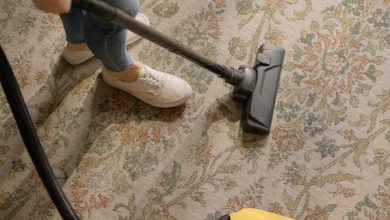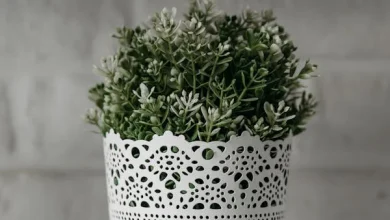
Plumber’s Toolbox: The Best Plumbing Tools for the Job
While on the job, plumbers face a variety of circumstances and challenges. They do not only ensure proper treatment of the plumbing problem at hand; they also do their best to somehow protect themselves from hazards and accidents in the course of work. Hence, they must equip themselves with the required skill-set as well as the proper tools for every plumbing issue–whether it is a clogged drain, a burst pipe, or a leak.
Homeowners also need to know the ways to take good care of their plumbing. Plumber experts must also be well-prepared so they can respond to plumbing emergencies. Having a plumber’s toolbox, with all the must-have tools, at home is actually a good idea. In case of plumbing disasters, homeowners can perform first-aid solutions without necessarily calling a plumber.
Basic Must-Have Plumbing Tools
The plumbing system of the home is one vital aspect of home ownership. It has to go through proper installation and maintenance so the household can be considered livable. However, troubles with the functionality of home fixtures cannot be avoided and can happen once in a while depending on the condition of the overall home plumbing. Hence, we must at least store several tools at home so that whenever problems occur, we can carry out basic troubleshooting. In your toolbox, make sure to have the following:
1. Plungers
Plungers are drain cleaning tools and are quite handy in terms of removing clogs. Having a plunger or two is a must so you can fix minor drain blockages. However, we must take note that there are two types of plungers, namely, the flange plunger and the cup plunger. These tools serve different purposes. The flange plunger is designed for unclogging the toilet. It is made up of soft rubber, which allows the plunger to make a strong seal on the curved surfaces of the toilet bowl. On the other hand, the cup plunger is used for unclogging the drains in the sink, tub, and shower floors. It has a flat bottom and a flexible rubber cup that is perfect for flat surfaces.
2. Snake and Auger
Certain drain clogs can’t simply be solved using the plunger. You need to use a snake or an auger to remove the blockages. The drain snake is meant for dislodging clogs in sinks, tubs, and showers, while the toilet auger is a form of drain snake intended for loosening and clearing obstructions specifically in the toilet drain. Augers come in varying lengths and have a rotating handle. An auger also has a metal cable that runs through a hollow tube so it pierces through drain clogs all the way to the main soil stack. It is covered by a rubber sleeve at the bottom and is designed in such a way that it won’t scratch the porcelain surfaces of the toilet bowl.
3. Pipe Wrench
A pipe wrench is a user-friendly plumber’s tool used for loosening and tightening things, especially pipe fittings. Because of its two adjustable serrated jaws, it can easily make a tight grasp on fixtures and fit in different pipe sizes. This tool is particularly handy when you are working on threaded piping, either for assembly or disassembly.
4. Pliers
Among the best tools used for pipe work are pliers. Any plumber’s toolbox never misses having the touch-and-groove pliers. Pliers are designed to perform plumbing works that entail twisting, tightening, loosening, pulling, grabbing, or holding something. You don’t need to worry about hand-gripping problems if you have pliers, especially the touch-and-groove pliers, which have flexible serrated jaws that can tightly grip things, big or small.
5. Teflon Tape
Teflon tape, otherwise called the plumber’s tape, is an inexpensive tool you must always keep in your plumbing tool kit. It is especially useful for making quick fixes such as sealing a pipe leak. Obviously, this material is water-resistant and is designed to block water from flowing out of your pipes. Moreover, it contains lubrication that allows for smooth threading of the fittings in your plumbing connections.
6. Hacksaw and tubing cutter
It is inevitable for plumbers to cut items or materials while fixing a plumbing problem or doing a plumbing project. That is why plumbers always carry around a hacksaw should there be a need for them to cut through pipes, bolts, screws, and/or nuts. Having spare blades for the hacksaw is also a must. On the other hand, a tubing cutter (as its name suggests) is used for cutting through plastic tubing.
7. Plumber’s Torch
When there is a need to replace pipes or install new ones we call the plumber experts. For this, they need to have a plumber’s torch to apply heat to a specific area when sealing new piping.
8. Flashlight
Clearly, plumbers must always have a flashlight in their tool kit in case they need to go into the basement, crawl spaces, and other dark areas of a home or building.
9. Safety tools (i.e. Gloves, Goggles, and Heat Shields)
Of course, a plumber should never forget to include safety gear, including goggles, gloves, heat pads, and heat shields in his toolbox. These tools keep plumbers safe and keep them from getting hurt or injured in the performance of their job. The gloves, for instance, will protect their hands from hazardous materials and allow them to have a strong grip on things. The goggles protect their eyes and the heat shield safeguards the plumbers from fire and heat damage when they are soldering.
Preparedness is Key
It really goes a long way to have those aforementioned tools in one’s plumbing tool kit. Whether you are a DIY homeowner or a real plumber, these plumbing tools are enough to make you perform the necessary plumbing procedure when resolving issues relevant to pipework, drainage maintenance, and system repair.




